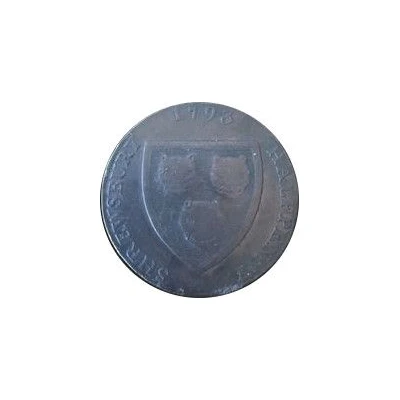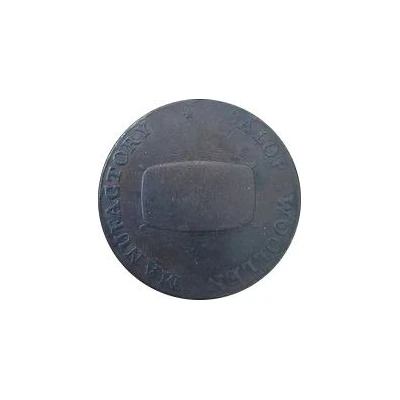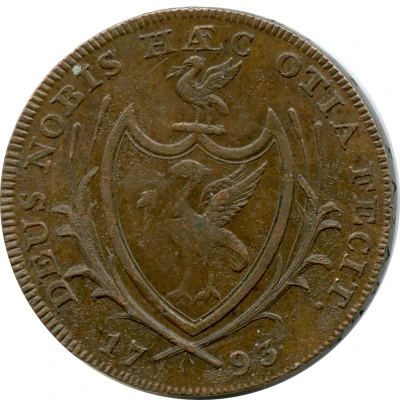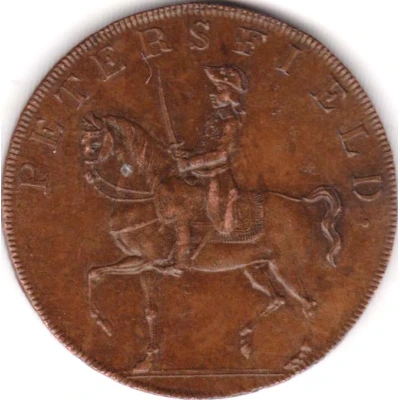
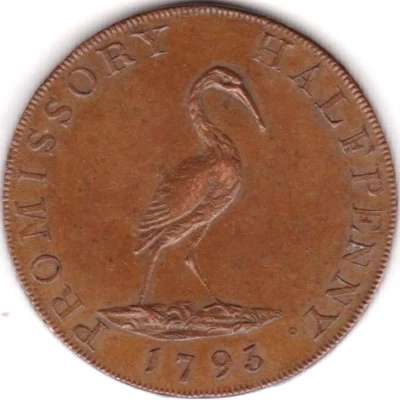

© JM
½ Penny Hampshire - Petersfield / Holland and Andrews
1793 year| Copper | 9.5 g | 28.5 mm |
| Issuer | United Kingdom (United Kingdom, British Overseas Territories and Crown Dependencies) |
|---|---|
| King | George III (1760-1820) |
| Type | Token |
| Year | 1793 |
| Value | ½ Penny (1⁄480) |
| Currency | Conder tokens (1787-1797) |
| Composition | Copper |
| Weight | 9.5 g |
| Diameter | 28.5 mm |
| Thickness | 1.9 mm |
| Shape | Round |
| Technique | Milled |
| Orientation | Coin alignment ↑↓ |
| Demonetized | Yes |
| Updated | 2024-10-09 |
| Numista | N#321047 |
|---|---|
| Rarity index | 85% |
Reverse
Stork standign on a piece of ground right, legend around, date below.
Script: Latin
Lettering:
PROMISSORY HALFPENNY .
1793
Edge
Plain with incuse lettering
Note: varieties exist (see below)
Lettering: EAMES HOLLAND & ANDREWS PETERSFIELD
Comment
This halfpenny token is one of a series of mules manufactured by Peter Kempson at his works in Birmingham. In the 18th century, token manufacturers often used their dies to their own advantage by striking “mules”, solely with the object of creating rare varieties which were sold to the collectors of the day.Petersfield is a market town situated on the northern slopes of the South Downs, 17 miles north of Portsmouth, in Hampshire, England. The town is on the crossroads of well-used north–south and east–west routes and it grew in prosperity due to its position as a coach stop as well as its local sheep farming, and cottage industries of leather and cloth.
The town was founded during the 12th century by William Fitz Robert, 2nd Earl of Gloucester, and confirmed by charter in 1198 by John, Count of Mortain, the later King John.
Engraver - Wyon. Manufacturer - Kempson. Proprietors - Holland & Andrews.
Interesting fact
One interesting fact about the Token ½ Penny (Hampshire - Petersfield / Holland and Andrews) 1793 from United Kingdom is that it was issued during a time of severe coinage shortages in the country. The coin was minted by a private company, Holland and Andrews, and was one of many tokens issued by local businesses and traders to address the lack of official currency. Despite its small denomination, the coin was widely accepted and used in everyday transactions, demonstrating the resourcefulness and resilience of the British people during times of economic hardship.
